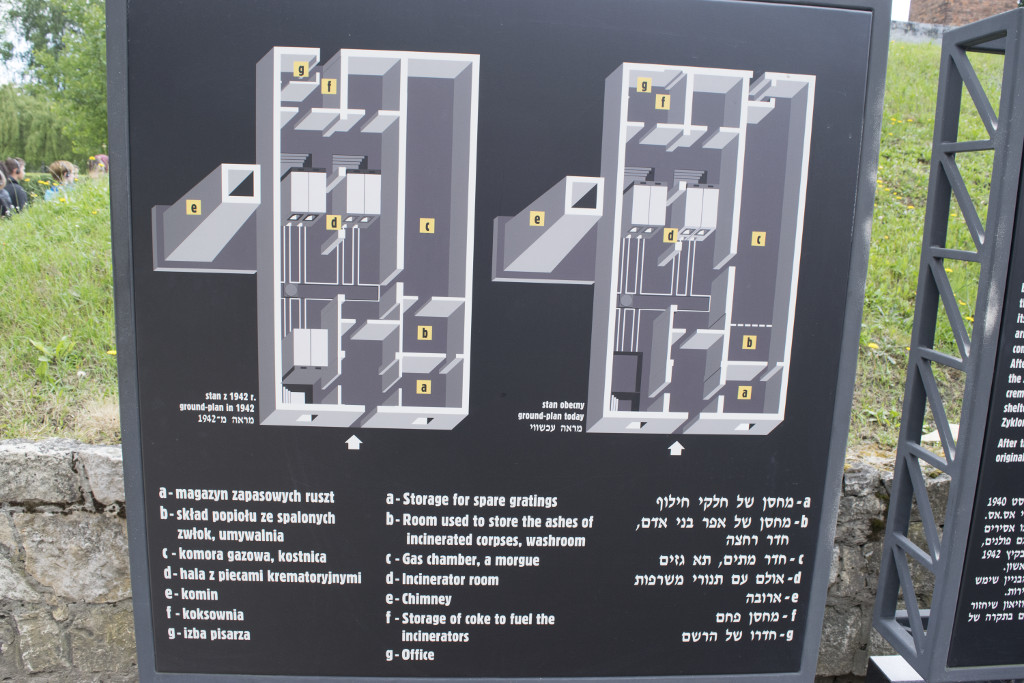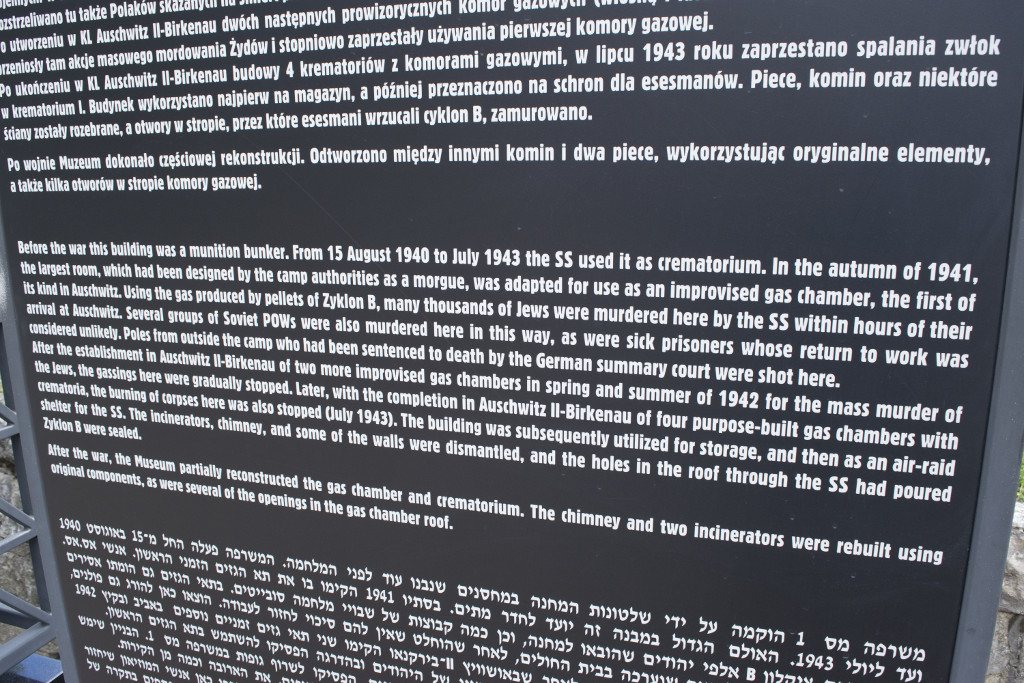Architectural Considerations Not Anti-Semitic
Open Letter to The Vermont Cynic
I am a member of CODOH and am responding to an article published in your paper regarding Bradley Smith, the Krema I building at Auschwitz, and accusations of Anti-Semitism.
Mr. Smith failed to respond not from indifference to the University of Vermont or rudeness but because he died on February 18. His e-mail was not directed at Jewish students, but rather at anyone with a critical mind. It claimed neither “that an Auschwitz crematorium was a ‘hoax’” nor that “a particular crematorium at Auschwitz was created post-war.”
I would like to address the statement attributed to Stevens and Vogel:
“We want to be clear that a communication such as this that perpetuates anti-Semitism by falsely proclaiming inaccurate historical events has no place at the University of Vermont.”
To be blunt, Stevens and Vogel seem totally ignorant about Krema I at Auschwitz, the focus of our “communication.” The morgue of that crematorium was allegedly reconfigured in late summer 1941 as a “gas chamber.” This happened after the first (alleged) gassing at Auschwitz in a different building in early September 1941 had turned out to be a disaster. Two weeks later, after Krema I had been reconfigured, the first gassing in that building is said to have happened (see the memoirs of former Auschwitz commandant Rudolf Höss, p. 30; see also the Jewish Virtual Library with more references). Interestingly, though, in both cases the victims are said to have been primarily Soviet PoWs. There was not a single Jewish victim in the group. Hence, discussing the origin of this gas chamber isn’t even connected with Jewish fatalities. How then can such a discussion be anti-Semitic?
Stevens and Vogel claim that we “proclaim inaccurate historical events.” The article we sent around discussed alterations made to Krema I after the end of the war. Here is what mainstream scholars say about it:
Back in the early 1990s, Franciszek Piper, at that point curator of the Auschwitz Museum’s Archives, stated on camera that what visitors see today is a “reconstruction” of what the place is said to have looked like when allegedly used as a homicidal gas chamber.
In a later letter Piper explained that this “reconstruction” had never been kept a secret to researchers of the topic. Among other sources, he quoted a work by French Auschwitz researcher “Jean Claude Pressac ‘Auschwitz: Technique and Operation of the Gas Chambers,’ published by The Beate Klarsfeld Foundation, New York 1989,” which had been written during the late 1980s in close cooperation with the Auschwitz Museum. On Krema I Pressac wrote:
“It would appear that the photos of the interior showing the state of the premises were not taken at the beginning of 1945, which is a pity because the restructuring of the building back into a Krematorium began immediately after the liberation. […] Because of the lack of original documents and the transformations that have been made (see the drawing of the present state of the premises at the end of this chapter), it was not possible before to materially demonstrate the existence of a homicidal gas chamber in the former morgue of Krematorium I.”
Interestingly, this fact of an undocumented “reconstruction” was hidden from tourists visiting Auschwitz until recently. In fact, Auschwitz tour guides, who learned their tour lecture from the Museum authorities, told tourists that everything they were seeing was in its original state (for this see the first part of the already mentioned video). Only in recent years did this change when the Museum put up a sign in front of Krema I saying:
“After the war, the Museum partially reconstructed the gas chamber and crematorium. The chimney and two incinerators were rebuilt using original components, as were several of the openings in the gas chamber roof.” (see the photograph)
It is therefore an incontrovertible fact that what we see today at Auschwitz is not what the Soviets found when they liberated the camp. It is also uncontested that the subsequent changes made to the building were undocumented.
Mainstream historians claim, based on numerous witness statements, that this building contained a homicidal gas chamber. The originally claimed death toll was in the range of hundreds of thousands, but today “not more than 10,000” are assumed to have been murdered there. Still, with up to 10,000 victims claimed, this building would still be the weapon of a gargantuan crime. Yet instead of investigating this murder weapon with proper forensic methods right at war’s end, the Soviets and/or Poles “reconstructed” it the way they felt it conducive to the credibility of their agenda. Here is what Wikipedia has to say about that:
“The spoliation of evidence is the intentional, reckless, or negligent withholding, hiding, altering, fabricating, or destroying of evidence relevant to a legal proceeding. Spoliation has two possible consequences: in jurisdictions where it is the (intentional) act is criminal by statute, it may result in fines and incarceration […].
The spoliation inference is a negative evidentiary inference that a finder of fact can draw from a party’s destruction of a document or thing that is relevant to an ongoing or reasonably foreseeable civil or criminal proceeding: the finder of fact can review all evidence uncovered in as strong a light as possible against the spoliator and in favor of the opposing party.”
Hence, the undocumented tampering with evidence speaks AGAINST the claims made by the spoliator – the Soviets and Poles – and FOR the victimized party – the German wartime camp authorities.
Pressac has thoroughly documented most of the incorrect “reconstructions” perpetrated after the war, some of which were made by accident (like reopening the wall leading to the furnace room in the wrong spot and without any door, or assembling the cremation furnaces incorrectly), but some have more the smell of a deliberate deception. This applies to today’s entrance to the claimed gas chamber sporting a heavy steel door. It was added only when the place was converted to an air-raid shelter for the SS in 1944, as the Auschwitz Museum itself admits today. They even display a drawing of how the place looked like when allegedly used as a gas chamber – with no access door in sight.

A proper reconstruction would have removed and walled up this entry. Of course, that would have left the “gas chamber” without a direct entry for the victims, and that’s where the story becomes interesting.
Another issue is the question of the four little chimneys in the roof of the “gas chamber” claimed to have been used to throw in the lethal Zyklon B. In the above-mentioned interview Piper claims they were “reconstructed” in exactly the same spots where they used to be, because on the ceiling the original “German” holes filled up with cement could still be recognized. How can Dr. Piper know this? He was merely a small child at war’s end (he was born in 1941), and as we have seen, there is no documentation about how that building looked after the war.
The article criticized by Stevens and Vogel addresses exactly that question: How can we know?
I am not sure what Stevens and Vogel claim is the "correct history" of Krema I, but the history of Krema I has already been subject to extensive revision by the Auschwitz Museum itself. And discussing these revisions has nothing to do with anyone’s attitude toward Jews.
Stevens and Vogel owe Mr. Smith an apology.
Sincerely yours,
David Merlin
CODOH
PO Box 20774
York PA 17402
[email protected]
Bibliographic information about this document: n/a
Other contributors to this document: n/a
Editor’s comments: n/a

